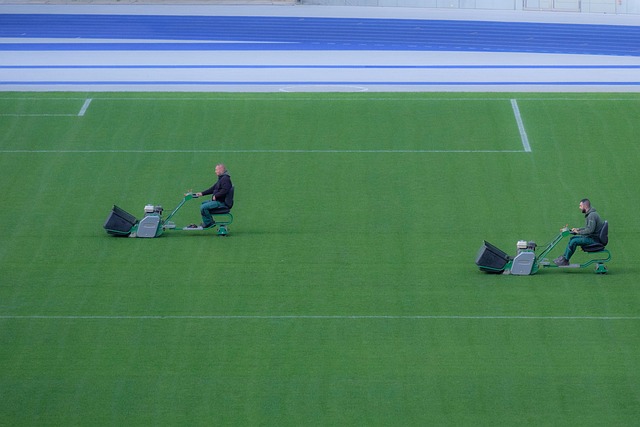Mulching and edging are essential practices in lawn care and landscaping. Mulching enriches soil, suppresses weeds, retains moisture, and promotes grass growth over time with organic nutrients. Edging defines grass lines, preventing encroachment onto walkways and garden beds. Combining these techniques creates a beautiful, tidy landscape that conserves water, reduces weed growth, and enhances overall aesthetics, making them vital components for sustainable lawn care.
Transform your lawn into a picture of perfection with effective mulching and edging techniques. This comprehensive guide explores the art of lawn care and landscaping, offering insights on maximising results. Discover the numerous benefits of mulching, from retaining moisture to suppressing weeds, and learn best practices for optimal application. Edging, a crucial step in defining your lawn’s borders, is also demystified. Uncover how these practices work together to create a lush, well-maintained lawn that becomes the envy of your neighbourhood.
- Understanding Mulching: Benefits and Best Practices
- Edging Techniques for Neat Lawn Borders
- Combining Mulching and Edging for Optimal Lawn Care
Understanding Mulching: Benefits and Best Practices

Mulching is an essential practice in lawn care and landscaping, offering numerous benefits for your yard’s health and appearance. By applying a layer of organic or inorganic material over the soil, mulching helps retain moisture, suppress weeds, and regulate soil temperature. This natural process enriches the soil as it decomposes, providing essential nutrients that support grass growth.
Best practices include using the right type of mulch for your lawn, such as wood chips, straw, or compost, and applying it evenly to a depth of 5-8 cm. Avoid piling mulch against tree trunks, as this can lead to rot. Regularly replenishing mulch ensures its effectiveness, especially in areas prone to rapid decomposition. Mulching not only enhances the curb appeal of your lawn but also contributes to its overall health and longevity, making it a valuable addition to any landscaping routine.
Edging Techniques for Neat Lawn Borders

Edging is a crucial aspect of lawn care and landscaping, ensuring your grass stays neat and well-defined. There are several techniques to achieve clean borders around your garden beds and pathways. One popular method is using string trimmers, which offer precise control for intricate designs. These versatile tools can create straight lines or custom shapes, allowing you to enhance the overall aesthetic of your lawn.
For a more traditional approach, hand edging with a metal edger is an effective way to achieve sharp boundaries. This technique requires some physical effort but provides excellent results. It’s especially useful for larger areas or where access with power tools might be challenging. Combining these edging techniques can transform the look of your lawn, making it the envy of the neighborhood in no time.
Combining Mulching and Edging for Optimal Lawn Care

In the realm of lawn care and landscaping, combining mulching and edging offers a powerful one-two punch for achieving a pristine outdoor space. Mulching involves placing organic material, such as wood chips or straw, on top of the soil to retain moisture, suppress weeds, and enrich the soil over time. Edging, on the other hand, is the meticulous act of defining your lawn’s borders by installing a barrier that prevents grass from encroaching onto walkways, driveways, or garden beds.
By integrating these two practices, you create a harmonious landscape where edging provides structure and tidiness, while mulching fosters healthier soil and a lush green carpet. This symbiotic approach not only enhances the overall aesthetics of your property but also contributes to sustainable lawn care by reducing water evaporation, minimizing weed growth, and providing essential nutrients as the organic matter decomposes.
Mulching and edging are essential practices in lawn care and landscaping, offering numerous benefits such as weed suppression, moisture retention, and improved soil health. By understanding the best practices for each technique and combining them effectively, homeowners can achieve a neat, well-maintained lawn that enhances their outdoor space. Regular application of these methods not only saves time and effort but also contributes to a lush, vibrant landscape.
